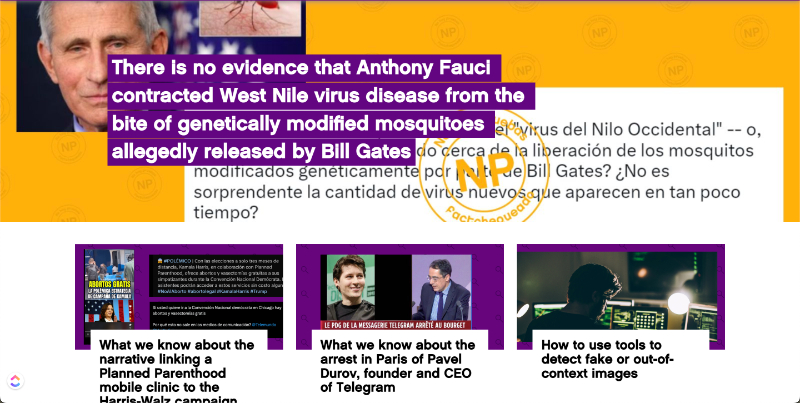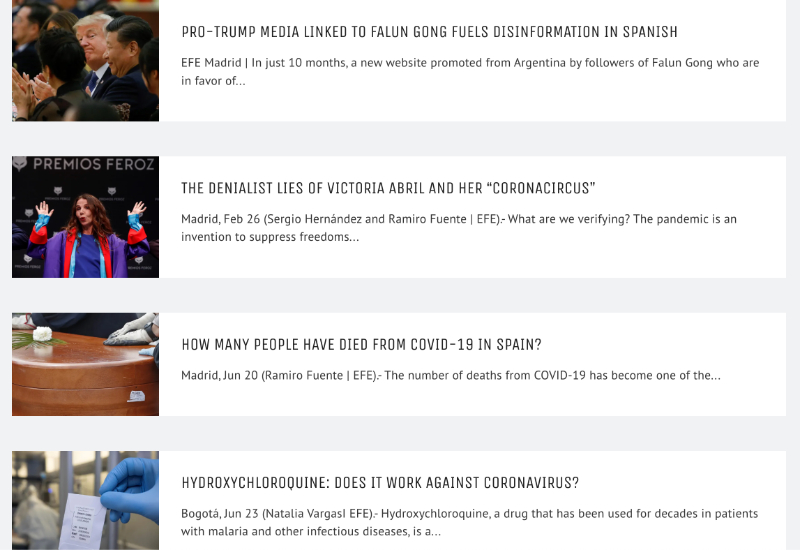How to Identify Fake News: Online News Verification Tools
The access to information has undergone a profound transformation driven by the expansion of social media as primary sources of news and information. However, this trend has been accompanied by a concerning phenomenon: the proliferation of fake news. To help combat misinformation, we present various fact-checking websites you can use to evaluate the veracity of the news you come across online.
Available in:
Fake news are not simply informational errors; they are content deliberately or inadvertently designed to deceive. Due to their wide dissemination, they can confuse the public. These news items mimic the style and format of trusted media but omit verification processes or intentionally manipulate facts. They often appeal to strong emotions in different social or political contexts, facilitating their rapid spread on social media.
Join the Datasketch community, upload your verified datasets, and help combat misinformation. Start here!
Although technology has facilitated the rapid spread of fake news across the internet and social media, it can also be a powerful tool for information verification. Digital platforms, advanced algorithms, and artificial intelligence tools enable the detection of suspicious patterns, the identification of unreliable sources, and the analysis of large volumes of data in real-time. In this way, the same technology used to spread misinformation can be leveraged to counteract it and strengthen informational accuracy.
To combat misinformation, various strategies have been implemented to help identify and stop the spread of fake news, not just for media and journalists but also for anyone. Among these strategies, the importance of developing critical skills that allow discrimination between true and false information stands out, as well as the use of content analysis tools on the internet and social media that facilitate the categorization and analysis of the vast amounts of data and news that appear daily.
Here are 5 fact-checking sites:

Latam Chequea is a collaborative project among various media outlets aimed at promoting data and news verification in Latin America. It also fosters media literacy by training both journalists and citizens on the importance of information verification. This network has become a benchmark in the fight against misinformation, demonstrating that teamwork and knowledge sharing are essential for effectively combating fake news. Currently, it brings together 41 media outlets from 19 countries.

Google Fact Check Explorer is a platform designed to help journalists, fact-checkers, and general users discover and verify information online. This tool facilitates access to fact-checks performed by various specialized organizations, allowing users to explore and confirm the veracity of claims or news they encounter on the internet.

AFP Factual is the fact-checking department of Agence France-Presse (AFP), a multicultural and multilingual news agency known for its precise, balanced, and impartial coverage worldwide. It is dedicated to combating misinformation and verifying the accuracy of news, claims, images, and videos circulating in media, social networks, and other digital platforms.

Factchequeado is a partnership between Maldita.es and Chequeado, two of the leading global organizations in Spanish-language data verification. The initiative aims to use the learnings and experiences of both organizations to create a Latino community of citizens and journalists in the United States to counteract misinformation in Spanish.

EFEVerifica is a data verification service launched in 2019 by Agencia EFE. This service provides useful information to counter falsehoods in Spanish, covering messages, videos, photographs, and statements. It is a signatory of the Code of Principles of the International Fact-Checking Network (IFCN), which establishes commitments to impartiality and transparency, with compliance evaluated annually by independent reviewers. Additionally, it participates in collaborative initiatives with Meta, Microsoft, Google, and YouTube to detect and curb the spread of fake news.
You might also be interested in: How to do fact-checking journalism?




